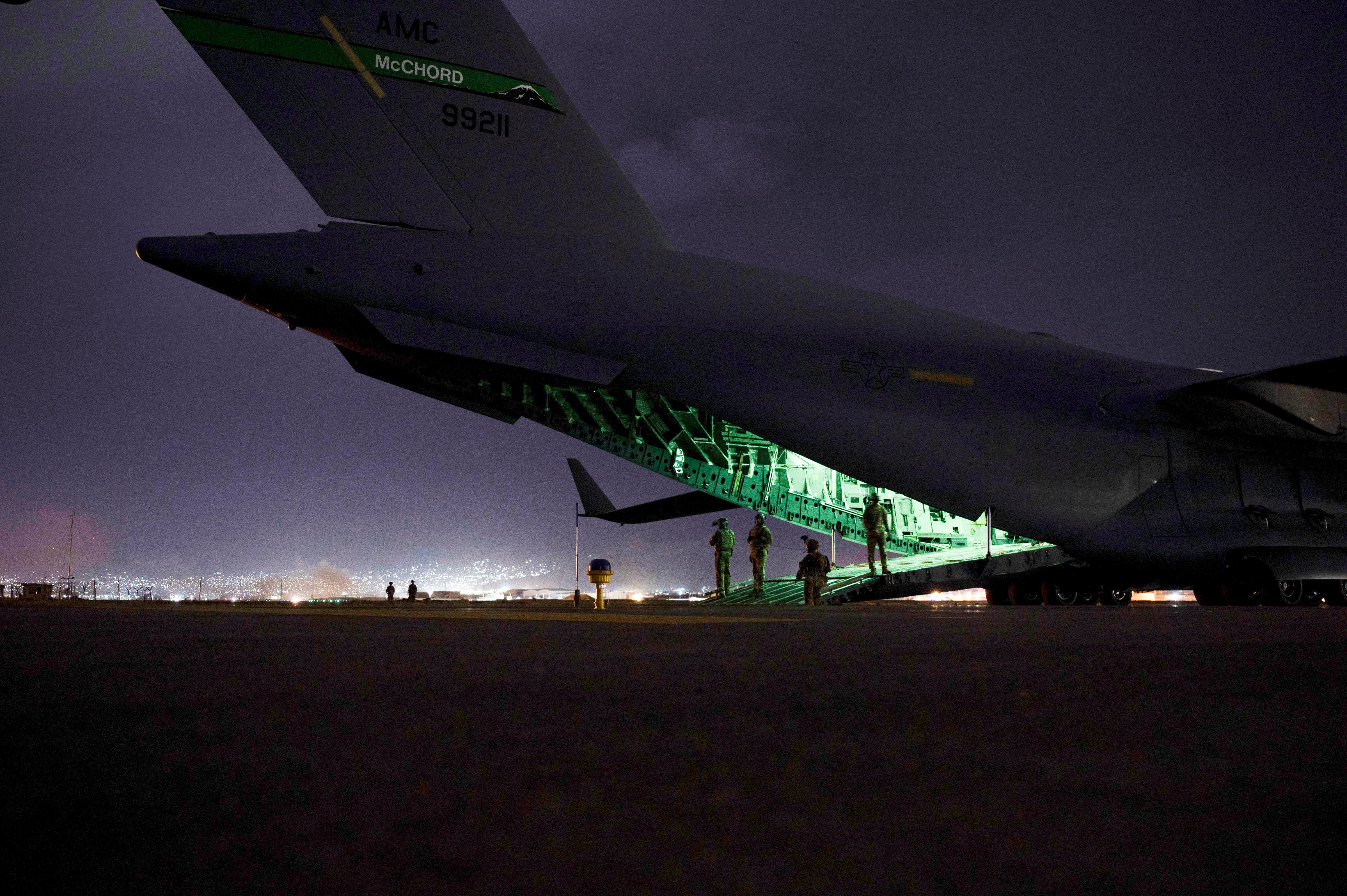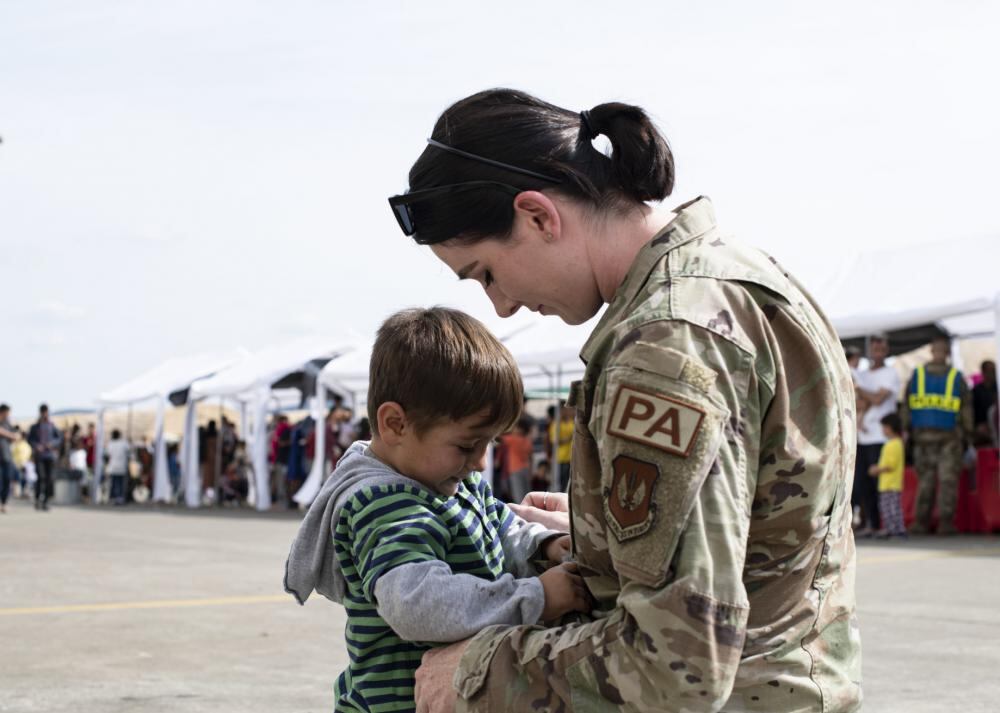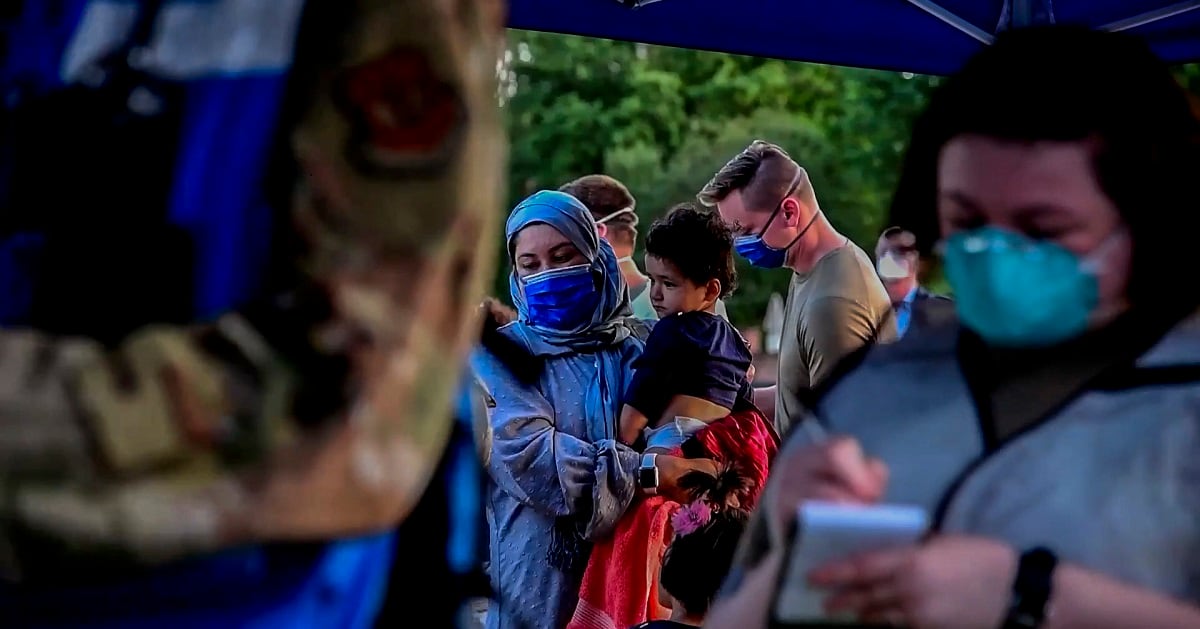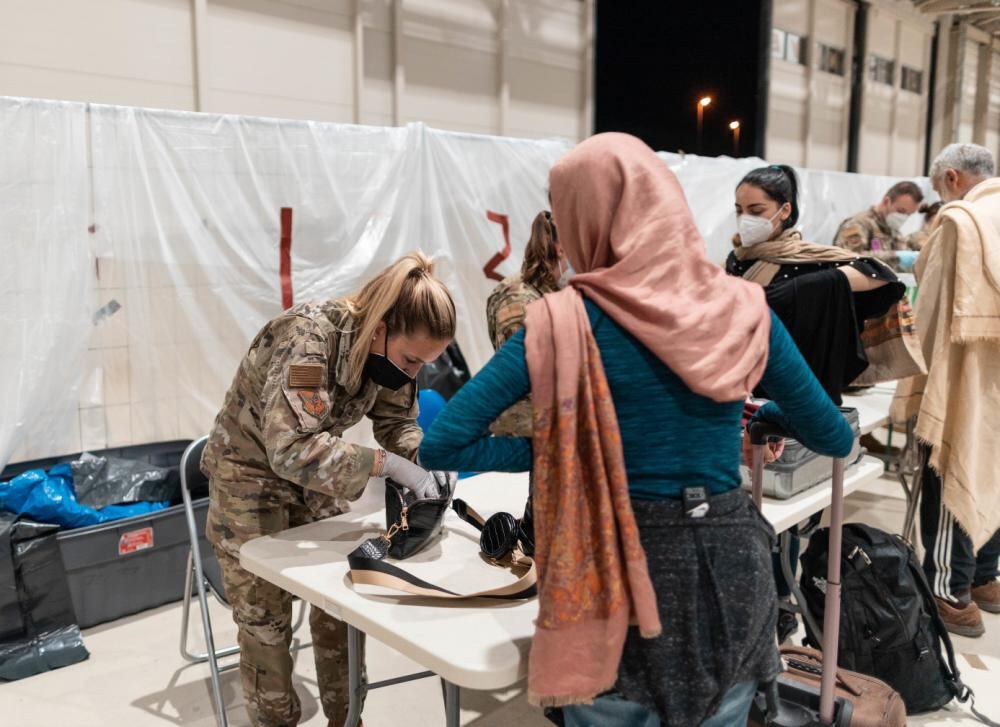NATIONAL HARBOR, Md. — When the last American C-17 transport jet went wheels-up on the final departure out of Kabul’s Hamid Karzai International Airport Aug. 30, America’s longest war culminated with the largest humanitarian airlift evacuation of civilians ever led by the U.S. But the work is far from over.
The U.S. Air Force is now pivoting from orchestrating the massive exodus of over 124,000 Afghans and Americans from a country once again under Taliban rule, to a quieter role helping even more people leave on commercial and privately organized flights.
Airmen are also working through other next steps of a frantic aid effort: caring for themselves and their aircraft after a traumatic month, treating illness and delivering babies among the refugees, distributing aid for basic needs, and running multiple vaccination campaigns.
“It was a relief to see [landing] gear in the well on the last airplane,” Air Mobility Command boss Gen. Jacqueline Van Ovost told reporters at the Air Force Association’s annual Air, Space, Cyber conference here. “But it also had a moment of, ‘OK, this was this event. There’s more to do.’ We have a lot of refugees in the pipeline. … We’ve got to continue.”
RELATED

Nearly 800 civilian and military aircraft from more than 30 nations carried travelers to safety between Aug. 14-30, according to AMC.
More than 500 crews on over 250 Air Force mobility aircraft took part in the evacuation, including about 110 of the Air Force’s enormous C-17s. As Operation Allies Refuge began Aug. 14, the number of C-17s at the Kabul airport rose nearly eight-fold, from six to 46 airframes, in just two days.
On a typical day, the Air Force has nearly 70 C-17s dispatched around the globe. During the Kabul evacuation, the service sent 60 Globemasters into U.S. Central Command and U.S. European Command alone — and averaged 113 per day at the height of the operation.
They ferried people from Afghanistan to Al Udeid Air Base in Qatar, Ali Al Salem Air Base in Kuwait, and several other locations before arriving at Ramstein Air Base in Germany and then the United States. Refueling tanker; intelligence, surveillance and reconnaissance; strike; and command and control aircraft assisted along the way.
“Al Udeid, Ali Al Salem and Ramstein are three of the four busiest military airfields in CENTCOM and [U.S. European Command],” AMC said. “What we did was the equivalent of increasing passenger and aircraft flow at our nation’s three busiest airports by 200-600 percent (think pre-COVID holiday travel levels) for three weeks.”

Evacuation was a multistep process: Refugees would get off one plane in Qatar, for instance, before hopping onto another one to continue their journey to Germany and then to the U.S. — more than 8,000 miles in total.
Those distances meant longer-than-usual days on duty for airmen. Despite that, airmen sought permission to forgo rest and keep working, said Brig. Gen. Daniel DeVoe, who runs the Tanker Airlift Control Center at Scott Air Force Base, Illinois.
Military aircraft took off from Kabul once every 34 minutes; maintainers at Al Udeid and Ali Al Salem serviced and repaired aircraft even as the summer heat spiked to about 115 degrees Fahrenheit.
“I expected more aircraft to break than did,” DeVoe said. “That is a testament to those maintainers and the work that they could do to keep those aircraft flying.”
Now the pace has slowed, allowing airmen to settle into more predictable routines helping the refugees temporarily housed at their bases. The Air Force is ramping up C-5 Galaxy operations and calling on more civilian and commercial flights so its C-17 Globemaster III crews and airframes can recharge.
“We want to make sure we tidy up the airplanes and get them the service that they need and get the crews the rest and recovery and, frankly, the additional training on other missions that they weren’t focused on,” Van Ovost said.
Commercial U.S. aircraft had handled more than 420 flights during and after the formal airlift operation as of Sept. 13, two weeks after America’s involvement there ended Aug. 30, the Air Force said. That included 200 flights headed to the United States, about 190 within the U.S. and around 30 to Ramstein.
RELATED

Airlines either volunteered for those missions or participated under the Civil Reserve Air Fleet program, which let the Pentagon call on 18 planes from six airlines — American Airlines, Atlas Air, Delta Airlines, Omni Air, Hawaiian Airlines and United Airlines — to ferry evacuees between and within countries en route to their final destinations.
Other airlines have joined in, such as Afghanistan’s Kam Air, which flew a group of about 400 refugees, including 114 American citizens, legal permanent residents and Afghan citizens from Mazar-i-Sharif in Northern Afghanistan to Doha, Qatar, Sept. 17.
Airmen at Ramstein converted one of their hangars, AMC’s largest outside of the continental U.S., into a makeshift international terminal with nine gates for remaining Americans, permanent U.S. residents, Special Immigrant Visa applicants and holders, and their families.
Troops have become airport staffers, checking that passengers and luggage are safe, caring for and feeding more than 25,000 passengers, and working with onsite staffers from the Departments of State and Homeland Security, Customs and Border Protection, Transportation Security Administration and the Federal Bureau of Investigation. It’s unclear how much longer that effort will continue or how many people are still trying to leave the country.
“Our lily pads are still engaged right now,” Van Ovost said. “There will be some sort of drawdown, but there will be an ability, working with [the] Department of State, to process additional personnel, just like we would with any other nation.”

Meanwhile, airmen have returned home from the trauma of watching tens of thousands of people scramble for their lives amid Taliban obstruction and Islamic State suicide bombers who attacked the airport. A federal investigation into human remains that were discovered in the wheel well of a C-17 mobbed by desperate Afghans is still underway.
“The most important thing for us was to take care of the crew and ensure that they had the support services necessary at Al Udeid to be able to process what happened, get interviewed, and the most important thing for them was to get back into the fight,” Van Ovost said.
Commanders have offered programs to help returning airmen decompress and encouraged them to take advantage of initiatives like True North, which embeds mental health professionals and religious support teams into units.
Col. Adrienne Williams, commander of the 521st Air Mobility Operations Wing at Germany’s Ramstein Air Base, said the wing’s welfare director went to Al Udeid to personally check in on airmen on the flightline.
“At the height, we had 46 C-17s on the ramp, and [maintainers] were out there turning the jets to make sure that they could get into [Hamid Karzai International Airport],” Williams said. “She was on the line with them and basically looking in their eyes, making sure that they were OK. It was amazing that they were, and that they knew what impact they were making for saving all these lives.”
Rachel Cohen is the editor of Air Force Times. She joined the publication as its senior reporter in March 2021. Her work has appeared in the Washington Post, the Frederick News-Post (Md.), Air and Space Forces Magazine, Inside Defense, Inside Health Policy and elsewhere.





